
Tissue Engineering Part B-Reviews
Scope & Guideline
Elevating Knowledge in Biochemical and Biomedical Engineering.
Introduction
Aims and Scopes
- Tissue Regeneration Strategies:
The journal emphasizes various methods for regenerating tissues across multiple systems, including bone, cartilage, and vascular structures, exploring both cellular and acellular approaches. - Biomaterials Development:
A core focus is on the design and application of biomaterials, including hydrogels, scaffolds, and 3D bioprinting materials, aimed at improving tissue integration and functionality. - Cell-Based Therapies:
The integration of stem cell technologies and their derivatives, such as extracellular vesicles, is frequently discussed, showcasing their roles in enhancing tissue repair and regeneration. - Innovative Therapeutic Approaches:
The journal covers novel therapeutic strategies, including gene editing, immunoengineering, and drug delivery systems, aimed at enhancing regenerative outcomes. - Interdisciplinary Research:
The scope includes interdisciplinary approaches combining biology, engineering, and clinical research, which facilitate advancements in regenerative medicine.
Trending and Emerging
- Advanced 3D Bioprinting Techniques:
There is a growing interest in the use of 3D bioprinting technologies to create complex tissue structures, reflecting advancements in fabrication techniques and the potential for personalized medicine. - Integration of Artificial Intelligence and Machine Learning:
Emerging themes include the application of AI in optimizing tissue engineering processes and analyzing large datasets, indicating a trend towards data-driven approaches in regenerative medicine. - Regenerative Approaches for Specific Tissues:
A noticeable trend is the tailored regenerative strategies focusing on specific tissues, such as vascular, cardiac, and neural tissues, highlighting the need for specialized solutions. - Focus on Extracellular Vesicles and Secretomes:
Research on the role of extracellular vesicles and stem cell-derived secretomes is gaining prominence, underscoring their potential in facilitating tissue repair and regeneration. - Biomimetic and Nature-Inspired Designs:
There is an increasing focus on biomimetic materials and designs inspired by natural systems, emphasizing the importance of mechanical and biochemical cues in tissue engineering.
Declining or Waning
- Traditional Tissue Engineering Techniques:
There seems to be a diminishing emphasis on conventional tissue engineering methods, such as simple scaffolding without advanced biophysical or biochemical enhancements, as more sophisticated techniques gain traction. - Low-Impact Biomaterials:
Research on low-performance or non-biomimetic materials is becoming less frequent, as the field moves toward more complex, biomimetic solutions that better replicate the native tissue environment. - Cell-Free Strategies:
While cell-free approaches were previously a focus, there is a noticeable reduction in publications addressing these methods, possibly due to the growing interest in cell-based therapies and their efficacy. - Basic Mechanistic Studies:
Studies focusing solely on basic biological mechanisms without translational applications are less common, as the journal increasingly prioritizes research that demonstrates clinical relevance. - Animal Models in Isolation:
There is a declining trend in research that utilizes animal models without a clear translational pathway or integration with human applications, reflecting a shift towards more clinically relevant studies.
Similar Journals
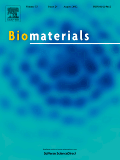
BIOMATERIALS
Pioneering Innovations in Bioengineering and BeyondBIOMATERIALS, published by Elsevier Science Ltd, is a premier academic journal dedicated to the interdisciplinary field of biomaterials research. With an impressive impact factor, it ranks in the Q1 quartile across multiple categories including Bioengineering, Biomaterials, and Biophysics, showcasing its significance in advancing scientific knowledge. Established in 1980 and set to converge its discussions through 2025, this journal provides a critical platform for researchers and professionals to disseminate their findings on the development, application, and performance of biomaterials. The journal covers a wide range of topics, from the mechanics of materials to nanotechnology, and is highly regarded with top Scopus rankings in essential categories, including an exceptional position within the 99th percentile for Biophysics. Although not an open access journal, BIOMATERIALS remains vital for students and established researchers alike, ensuring accessibility to groundbreaking research in the field. Engage with cutting-edge studies that pave the way for innovative applications in medicine, engineering, and beyond.
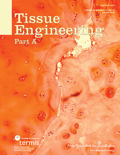
Tissue Engineering Part A
Innovating the Future of Regenerative MedicineTissue Engineering Part A is a prestigious peer-reviewed journal published by MARY ANN LIEBERT, INC that focuses on innovative research and advancements within the field of tissue engineering and regenerative medicine. Since its inception in 2008, this journal has played a critical role in disseminating cutting-edge findings that bridge the gap between laboratory research and clinical application, underscoring its significance in the scientific community. With a diverse scope encompassing biochemistry, bioengineering, biomaterials, and biomedical engineering, the journal ranks notably in the Scopus database, holding a Q2 quartile status across multiple categories, thus reflecting its high impact on ongoing research and professional practice. For researchers, professionals, and students, Tissue Engineering Part A serves as an invaluable resource, offering insights into the latest methodologies and breakthroughs that drive the future of healthcare and therapeutic strategies. While primarily a subscription-based journal, it ensures that vital research is accessible to a broad audience of scientists and engineers committed to advancing the life sciences.
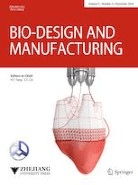
Bio-Design and Manufacturing
Unveiling the Science of Efficient Bio-ManufacturingBio-Design and Manufacturing, published by SPRINGER HEIDELBERG, is a pioneering journal that stands at the forefront of innovation in the fields of Biomedical Engineering, Biotechnology, Industrial and Manufacturing Engineering, and Materials Science. With its ISSN 2096-5524 and E-ISSN 2522-8552, this journal has established itself as a leading platform for disseminating cutting-edge research and advancements that merge biological principles with manufacturing processes, emphasizing sustainable and efficient practices. It has garnered recognition in the 2023 category quartiles, boasting a Q1 rank in all its relevant fields, which underscores its significance and impact—evident from its prime Scopus rankings that place it within the top percentiles of numerous engineering and materials science disciplines. Researchers, professionals, and students alike benefit from the wealth of knowledge presented in this journal, making it an essential resource for those seeking to enhance their understanding of bio-design applications and innovation in manufacturing processes.

Biomedical Materials
Pioneering Research in Biomedical Materials and Engineering.Biomedical Materials, published by IOP Publishing Ltd, is a premier journal dedicated to the rapidly evolving field of biomedical engineering and materials science. With a robust impact factor showcasing its influence, this journal serves as a vital platform for disseminating pioneering research from 2006 to 2024. Covering an array of interdisciplinary topics—ranging from biomaterials to bioengineering and applied chemistry—the journal consistently ranks in the second quartile across multiple categories including Bioengineering (Q2), Biomaterials (Q2), and Biomedical Engineering (Q2) as of 2023. Researchers, professionals, and students alike benefit from its contributions, exploring innovative solutions at the intersection of biology and material science. Although not an Open Access journal, Biomedical Materials remains essential in advancing our understanding and facilitating discussions surrounding state-of-the-art materials that revolutionize medical applications and enhance patient care.

Current Opinion in Biomedical Engineering
Advancing insights in biomedical innovation.Current Opinion in Biomedical Engineering is a renowned journal published by Elsevier, focusing on the cutting-edge developments and critical assessments in the fields of biomedical engineering and related disciplines. With an ISSN of 2468-4511, it provides a valuable platform for researchers and professionals to disseminate their insights and discoveries in areas such as bioengineering, biomaterials, and medicine. Its impressive impact factor positions it in the Q2 category for several fields, including Bioengineering and Biomedical Engineering, highlighting its influence and relevance in ongoing scientific dialogues. The journal’s unique format of opinion pieces and reviews encourages innovative thinking and fosters collaboration among experts. As an essential resource for those engaged in the life sciences and engineering, Current Opinion in Biomedical Engineering serves to stimulate discussion, promote knowledge exchange, and drive advancements in biomedical applications. Set in the Netherlands at Radarweg 29, 1043 NX Amsterdam, the journal is accessible through various academic platforms, enabling a global readership to engage with the latest scholarly work in this dynamic field.

Regenerative Therapy
Fostering collaboration across disciplines in regenerative research.Regenerative Therapy is a premier open-access journal dedicated to advancing the fields of biomaterials, biomedical engineering, and developmental biology. Published by Elsevier in Japan, this journal has been an influential platform since its inception in 2015, contributing significantly to the global discourse on regenerative medicine. With an impressive Q2 ranking in major categories such as Biomaterials and Biomedical Engineering, it is recognized for its quality of research and innovation. Researchers seeking to disseminate their findings or explore cutting-edge developments will find Regenerative Therapy to be invaluable, reflecting current trends and fostering collaborations across interdisciplinary boundaries. The journal offers open access, ensuring that high-quality research is available to a broad audience and enhances the impact of scholarly work in the regenerative medicine community.

Acta Biomaterialia
Advancing the Frontiers of Biomaterials ResearchActa Biomaterialia, published by Elsevier Science Ltd, is a leading journal in the fields of biochemistry, biomaterials, biomedical engineering, biotechnology, and molecular biology. With an ISSN of 1742-7061 and an E-ISSN of 1878-7568, this prestigious journal has secured a remarkable position in the academic community, evidenced by its inclusion in the Q1 category across multiple disciplines for 2023. It ranks impressively at #21 in biochemistry, #16 in biomedical engineering, #18 in biotechnology, and #11 in biomaterials, reflecting its high impact and relevance to ongoing research and development. The journal provides a platform for disseminating innovative research and advancements in the design and application of biomaterials, contributing to scientific discussions that propel the field forward. Although it does not currently offer open access options, Acta Biomaterialia continues to attract contributions that advance our understanding of biomaterials and their interactions with biological systems, ensuring that researchers, professionals, and students remain informed about the latest trends and breakthroughs in this rapidly evolving area of study.
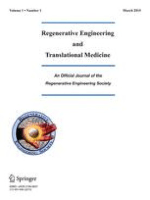
Regenerative Engineering and Translational Medicine
Transforming Research into Real-World SolutionsRegenerative Engineering and Translational Medicine is an esteemed academic journal published by Springer Heidelberg, focusing on the interdisciplinary fields of biomaterials, biomedical engineering, and cell biology. With an ISSN of 2364-4133 and an E-ISSN of 2364-4141, the journal has carved a niche for itself since its inception in 2015, showcasing cutting-edge research that bridges the gap between scientific findings and practical applications in regenerative medicine. As a recognized platform in its field, it is currently positioned within Q3 quartiles in biomaterials, biomedical engineering, and medicine (miscellaneous), with a Scopus ranking that reflects its growing influence among peers. The journal aims to disseminate high-quality, peer-reviewed articles that highlight advancements in regenerative engineering, further advancing both theoretical and applied research. Scholars and practitioners seeking to stay at the forefront of the ever-evolving landscape of regenerative health solutions will find invaluable insights and innovations within these pages. Join a community of leading thinkers and explore the journal's comprehensive research contributions, which are crucial for fostering partnerships between academia and industry in the quest for transformative medical solutions.
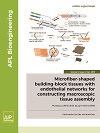
APL Bioengineering
Advancing Bioengineering for a Healthier TomorrowAPL Bioengineering is a premier open-access journal published by AIP Publishing, dedicated to advancing the field of bioengineering and its interdisciplinary applications. Established in 2017, this journal serves as a vital platform for researchers, professionals, and students interested in the critical intersections of bioengineering, biomaterials, biomedical engineering, and biophysics. With an impressive impact factor and consistent rankings in the Q1 category across multiple domains, including biochemistry and materials science, APL Bioengineering has positioned itself among the top journals in its field. The journal aims to publish innovative original research, comprehensive reviews, and insightful case studies that further the understanding and application of bioengineering principles. Since its inception, APL Bioengineering has fostered a community of thought leaders, providing open access to ensure broad dissemination of knowledge and advancements that underpin the future of biomedical innovation.
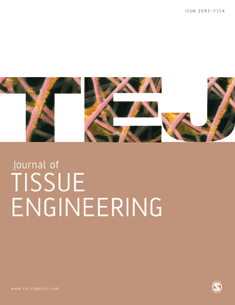
Journal of Tissue Engineering
Transforming Healthcare Through Cutting-Edge ResearchThe Journal of Tissue Engineering, published by SAGE Publications Inc., stands at the forefront of innovation in the interdisciplinary fields of biomaterials and biomedical engineering. Established as an open access journal since 2010, it has quickly ascended to a leading position, as evidenced by its impressive rankings in 2023: Q1 in Biomaterials, Q1 in Biomedical Engineering, and Q1 in Medicine (miscellaneous). With a current impact factor that underscores its academic influence, this journal provides a vital platform for researchers, professionals, and students to share groundbreaking discoveries and advancements in tissue engineering and regenerative medicine. Located in the United Kingdom, the journal fosters a global dialogue with its robust publications and rigorous peer-review process, contributing significantly to the enhancement and understanding of complex biological systems. Join the esteemed community of thought leaders and innovators shaping the future of healthcare through the Journal of Tissue Engineering.